Fire fighting in electrical installations
The electrical installation is subject to increased danger, in which, in addition to the danger posed by electricity, there are other dangerous factors. One of them is the danger of fires during operation of electrical installations. Compliance with all fire safety measures in electrical installations cannot completely exclude the possibility of fire.
The practice of operating electrical installations shows that there are many unforeseen situations that lead to fires. Therefore, to ensure fire safety, service personnel must know how to extinguish fires in various situations. Consider the basic rules and recommendations for extinguishing fire in electrical installations.
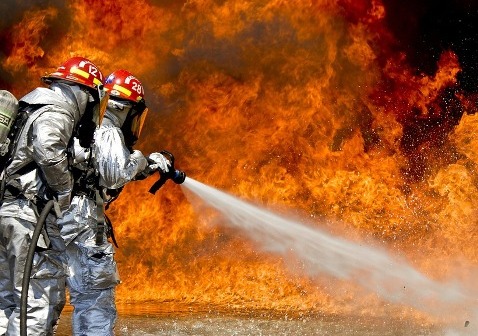
Causes of fire in electrical installations
Fires cause significant property damage and can lead to accidents. In order to comply with the necessary fire safety measures, it is necessary first of all to establish all possible sources of this negative phenomenon. Consider the main causes of fire in electrical installations.
Emergency modes of electrical equipment
Overload and short circuit can be attributed to emergency operation. All equipment is designed to operate normally at a specified load current. When this value is exceeded, that is, during an overload, the current-carrying parts and contacts heat up, which can eventually lead to a fire if the protection does not immediately switch off the overloaded section of the electrical network. So, the first cause of fire is equipment overload in the absence of proper protection.
The second reason is a short circuit... A short circuit occurs in case of damage to the equipment, power lines and is accompanied by large currents, which in seconds damage the equipment and lead to its fire. It is very important in the event of a breakdown that the protection works properly and shuts down the damaged area in a fraction of a second, preventing the negative consequences of this phenomenon.
The cause of a fire in the event of a short circuit can be not only an error in the protection, but also the peculiarities of its operation. To ensure the selectivity of the protective operation, one of the stages is performed with a certain time delay. And if a fault has occurred in the area where the protection works with a short exposure, then this time may be enough for a fire to occur. For example, a single spark may be sufficient to ignite oil-filled equipment.
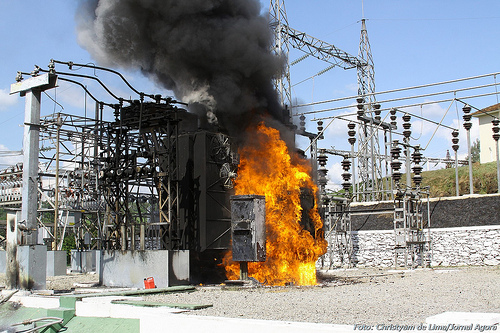
Considering the modes of operation of the equipment, it is necessary to separately emphasize the mode of operation of the equipment in a defective state, which is also an emergency. In this case we are talking about:
-
electrical equipment that has damage to internal structural elements, drives, control and protection circuits;
-
loose contact connections;
-
discrepancy in the pressure and level of gases and liquids that ensure the operation of certain elements of the equipment, as well as their untimely replacement;
-
excessive contamination of the insulation.
Operating the equipment in a non-working condition sooner or later leads to damage with a high probability of fire. The failure of the equipment is a consequence of non-compliance with the requirements for operation, maintenance and inspection of the equipment. That is, the cause of the fire is the fact that the equipment was brought to a defective state.
In addition to the above, emergency situations in electrical installations may also include the occurrence of a fault in auxiliary circuits of equipment, auxiliary circuits of the facility.
In this case, the most common causes of fires are damage, followed by ignition of secondary switching circuits of the equipment, heating and lighting of cabinets and equipment rooms. Also, the cause of fire can be damage to the cooling systems of power transformers, communication and telemechanical devices, ventilation systems of premises.
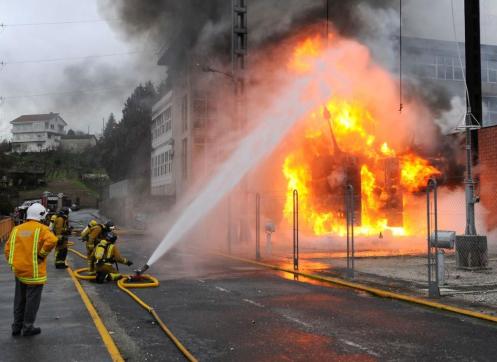
Violation of fire safety rules
A fairly common cause of fires in electrical installations is a violation of the requirements of the current normative documents for fire safety.
First of all, it is the careless handling of fire. Fire can be caused by smoking in an unspecified place, burning grass and garbage.
Failure to observe fire safety measures when performing welding work or using electrical tools that are dangerous from the point of view of fire safety can be the cause of fires.
The next reason is the ignition of combustible materials and flammable liquids due to violation of the requirements for their storage and use.
During the operation of open distribution devices, it is necessary to harvest grass and overgrowth in time. Untimely cleaning of the area, especially dry grass, is a common cause of fire in electrical installations.
Also, the cause of the fire can be the penetration of birds and animals into electrical equipment, distribution cabinets. Through exposed openings in equipment cabinets, animals easily penetrate to live parts and can cause severe emergency situations.
According to statistics, 43.3% of the total number of fires that occurred in household electrical installations, networks and electrical appliances are caused by short circuits, 33.3% — by electric heating devices, 12.3% — by overloading of electric motors and networks, 4, 6% — from the formation of large local transient resistances, 3.3% — from electric arcing and sparking, 3.2% — from heating structures during the transition (removal) of voltage to them.
— Gripas S.A.
The procedure for personnel in the event of a fire in an electrical installation
When signs of fire appear in an electrical installation, the first thing you should do is assess the situation, get a general idea of what is happening.
In addition, without delay it is necessary to inform the higher personnel about the incident - the duty dispatcher, the shift leader, the foreman of the section, etc. In order not to waste time, all actions, tasks of higher-level personnel, the results of inspections should be recorded in a draft.
After assessing the scale of the fires, an additional procedure is determined. If the fire cannot be extinguished independently, by the personnel in the electrical installation, then it is necessary to call the fire department through the existing connection - mobile or landline phone, internal telephone communication.
When the fire department arrives, it is necessary to meet it, recognize it with a special permit to extinguish the fire, having previously taken the necessary measures for electrical safety. It is also necessary to ground the equipment, issue the necessary protective equipment, show the possible access routes, the places for grounding the equipment, the location of the fire hydrant and other water supply elements.
Below we will consider in more detail the nuances regarding the organization of fire extinguishing.
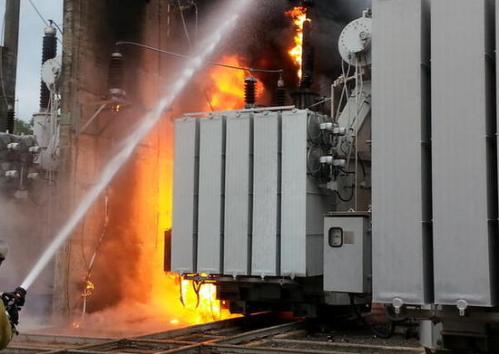
Electrical hazard
When extinguishing a fire in electrical installations, you must first remember about the danger of electric shock in the process of extinguishing the fire.
Therefore, the first thing to do in the event of a fire is to disable the equipment on fire. If we are talking about a switching device, for example a switch, the presence of fire on it indicates that it is in a damaged state and cannot be controlled.
In this case, it is necessary to exclude the source of fire by turning off the power from all sources that supply this section of the electrical network, and disassemble the circuit with disconnectors, and then restore power to other equipment.
When fighting a fire, also remember that there is a risk of electric shock from nearby equipment. Therefore, before directly extinguishing a fire, ensure that nearby equipment does not present a risk of electric shock and, if necessary, carry out the necessary transfers.
When the equipment is turned off, consumers that are very important in the power category may be turned off, therefore it is necessary to inform the user's personnel about the equipment fire and the approximate time to restore the power, depending on the situation. In the presence of backup power supplies, it is necessary to quickly turn on the power supply of disabled consumers.
Particular attention should be paid to the issue of electrical safety of the fire department that arrived at the facility to eliminate the fire. It is necessary to instruct them about the safety measures taken, about the need to use certain ones electrical protection equipment and give them to each team member.
Fire-fighting equipment must be fault-free earthed, that is, connected to a nearby earth electrode using a portable earthing section that corresponds to a certain voltage class.
Extinguish fire with available means
Depending on the situation and the availability of the necessary fire-extinguishing equipment, a decision can be made to remove the fire independently without involving the fire department.
In this case, we are talking about the use of primary fire extinguishing means — fire extinguishers, sand from boxes located on the territory of the distribution devices.
Fire extinguishers with powder or types of carbon dioxide… These fire extinguishers can be used to extinguish equipment only at voltages up to 1000 V - usually this information is indicated on the fire extinguisher. In electrical installations with a voltage class above 1000 V, the use of fire extinguishers is possible only after removing the voltage from the equipment.
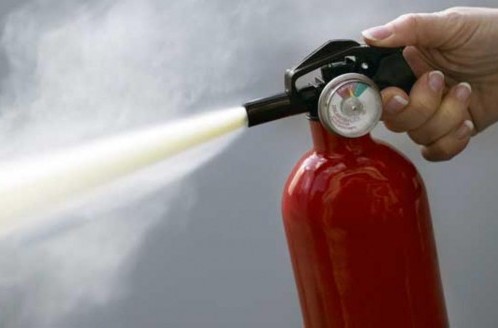
Also, the main means of extinguishing a fire include auxiliary means located on fire shields — special cone buckets, bayonet shovels, scrap, felt (fire blanket), fire hook.
Individual species power transformers, autotransformers, current limiting reactors can be equipped with automatic fire extinguishing installations. In the event of a fire, this device must be turned on automatically or remotely from the control panel.
Measures to improve the effectiveness of personnel actions in firefighting
In order to eliminate fires as quickly as possible and the personnel serving the electrical installations to act correctly and efficiently, a number of measures are applied.
First, it is the development of operational plans for extinguishing fires - the so-called fire extinguishing maps. For each piece of equipment, an individual map is developed (a group of equipment in one cell, a cabinet, etc.), which provides recommendations for what safety measures should be taken in case of fire and in what ways, with what means to extinguish the fire. The use of these cards significantly reduces the time required to extinguish a fire, and also excludes possible wrong actions.
Second, it is the conduct of fire prevention training for the staff. The purpose of this event is to acquire practical skills for action in case of emergency situations that lead to equipment fire. The training provides for the execution of actions conditionally, several options for the development of a specific situation and the corresponding actions of the personnel are considered.
In order to control the service personnel, a periodic test of knowledge on fire safety issues is carried out.
